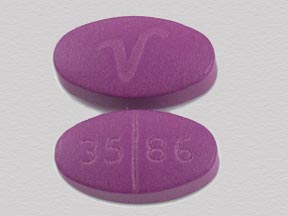Ibudone Dosage
Generic name: HYDROCODONE BITARTRATE 5mg, IBUPROFEN 200mg
Dosage form: tablet, film coated
Drug class: Narcotic analgesic combinations
Medically reviewed by Drugs.com. Last updated on Jan 8, 2024.
Carefully consider the potential benefits and risks of IBUDONE ® and other treatment options before deciding to use IBUDONE ®. Use the lowest effective dosage for the shortest duration consistent with individual patient treatment goals (see WARNINGS: Cardiovascular Thrombotic Events, Gastrointestinal Bleeding, Ulceration, and Perforation) .
Initiate the dosing regimen for each patient individually, taking into account the patient's severity of pain, patient response, prior analgesic treatment experience, and risk factors for addiction, abuse, and misuse (see WARNINGS: Addiction, Abuse, and Misuse) .
Monitor patients closely for respiratory depression, especially within the first 24-72 hours of initiating therapy and following dosage increases with IBUDONE ® and adjust the dosage accordingly (see WARNINGS: Life-Threatening Respiratory Depression) .
After observing the response to initial therapy with IBUDONE ®, the dose and frequency should be adjusted to suit an individual patient's needs.
Initial Dosage
For the short-term (generally less than 10 days) management of acute pain, the recommended dose of IBUDONE ® is one tablet every 4 to 6 hours, as necessary. Dosage should not exceed 5 tablets in a 24-hour period. It should be kept in mind that tolerance to hydrocodone can develop with continued use and that the incidence of untoward effects is dose related.
The lowest effective dose or the longest dosing interval should be sought for each patient (see WARNINGS) , especially in the elderly. After observing the initial response to therapy with IBUDONE ®, the dose and frequency of dosing should be adjusted to suit the individual patient's need, without exceeding the total daily dose recommended.
Titration and Maintenance of Therapy
Individually titrate IBUDONE ® to a dose that provides adequate analgesia and minimizes adverse reactions. Continually reevaluate patients receiving IBUDONE ® to assess the maintenance of pain control and the relative incidence of adverse reactions, as well as monitoring for the development of addiction, abuse, or misuse (see WARNINGS: Addiction, Abuse, and Misuse) . Frequent communication is important among the prescriber, other members of the healthcare team, the patient, and the caregiver/family during periods of changing analgesic requirements, including initial titration.
If the level of pain increases after dosage stabilization, attempt to identify the source of increased pain before increasing the IBUDONE ® dosage. If unacceptable opioid-related adverse reactions are observed, consider reducing the dosage. Adjust the dosage to obtain an appropriate balance between management of pain and opioid-related adverse reactions.
Discontinuation of IBUDONE ®
When a patient who has been taking IBUDONE ® regularly and may be physically dependent no longer requires therapy with IBUDONE ®, taper the dose gradually, by 25% to 50% every 2 to 4 days, while monitoring carefully for signs and symptoms of withdrawal. If the patient develops these signs or symptoms, raise the dose to the previous level and taper more slowly, either by increasing the interval between decreases, decreasing the amount of change in dose, or both. Do not abruptly discontinue IBUDONE ® in a physically dependent patient (see WARNINGS: Addiction, Abuse, and Misuse, DRUG ABUSE AND DEPENDENCE) .
More about Ibudone (hydrocodone / ibuprofen)
- Check interactions
- Compare alternatives
- Reviews (1)
- Drug images
- Side effects
- During pregnancy
- Drug class: narcotic analgesic combinations
Patient resources
Other brands
Vicoprofen, Reprexain, Xylon 10
Professional resources
Related treatment guides
Further information
Always consult your healthcare provider to ensure the information displayed on this page applies to your personal circumstances.


